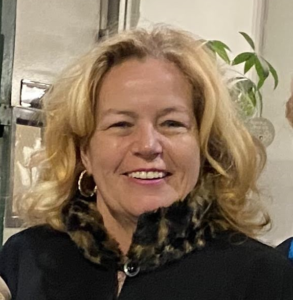By Ellen Russell Beatty
Ponder This

Ellen Russell Beatty
I have previously written about the significant benefits of QR scanning. Ever-improving scanning technology has augmented the 1950s invention of the barcode and revolutionized retail business operations. The benefits to businesses and to emerging applications are obvious, numerous and game changing. It no longer seems remarkable to scan a QR code embedded within a website to order, purchase and seamlessly track products or services. The response from consumers has been overwhelmingly positive.
The sheer speed of technological innovations has made remarkable improvements to daily lives. But such rapid change can usher in unintended consequences. Perhaps we need to rethink the pace and place of technology in our lives. It may be happening so fast that we risk becoming less discerning about where, when and how often we want the speed and ease of use.
A recent social media exchange with a friend included an amusing and timely cartoon. Pictured is a senior woman using a cane at a train ticket booth. The clerk at the ticket counter sits beneath a revised sign labeled “INFO HUB,” with “Tickets” crossed out. The clerk patiently restates directions to “go home, log on to website from computer, create an account, purchase ticket with credit card, download the ticket to your smartphone, then come back at the specified time…what part of easier and convenient don’t you get?”
This cartoon is hilarious, yet true enough to be poignant.
The latest smartphones have embedded the technology so that it is no longer necessary to install an app in order to access scanners. It is routine to scan a QR code directly from our smartphones, thus enabling us to process information, obtain goods and find services in an instant. Current predictions are that scanning will continue on a path to becoming ubiquitous aspects of our lives and a permanent part of our future. Bill paying, obtaining information for car and home sales as well as more sophisticated, necessary financial transactions already require coding.
Despite the lag in senior use documented by consumer research, there are many seniors happily using smartphones as patients seeking health information. Convenience and safety from touching were attractive options during the recent pandemic, with lasting effects on habits.
During the pandemic, many seniors learned to use scanning to show proof of vaccination status. Marketing research and consumer opinion polls provide insight into habits and influences. Approximately 20 percent of people aged 65-72 years indicate difficulty with use of QR. Ironically, elders are targeted for particular services that require QR coding.
There are both disadvantages and opportunities in the mixed findings about elder use of QR technology. Legitimate concerns surrounding QR scanning including data security issues and access have been identified. Use of QR coding technology requires internet access and a shift away from the two-way communication so often preferred by elder demographic groups.
Discussion has centered around those left behind, including the elderly and the economically and/or technically disadvantaged. Those very people who may use it less may actually require it more. The latest polling indicates that for those aged 65-72, the possibilities seem endless, enabling the connection of patients to important health information.
Smartphone fatigue may be occurring among older Americans. Almost 40 percent of non-users are in this 65-72 age group, according to internet-based opinion polling by independent agencies. Yet this does not undo the data showing almost 80 percent of all Americans indicate a desire to use coding. This is illustrative of a fertile group awaiting additional innovations and applications but perhaps requiring support and practice for optimum use.
Dr. Ellen Russell Beatty is in her fourth term on the Milford Board of Aldermen. She served seven years as Associate Vice President of Academic Affairs at Southern Connecticut State University, and also served as interim Academic Vice president, Dean of Health & Human Services and Director of Faculty Development. In addition to the broad perspective and a multitude of skills required of high-level administrators, her areas of special expertise lie in strategic planning, accreditation, assessment and planning and budgetary allocation.